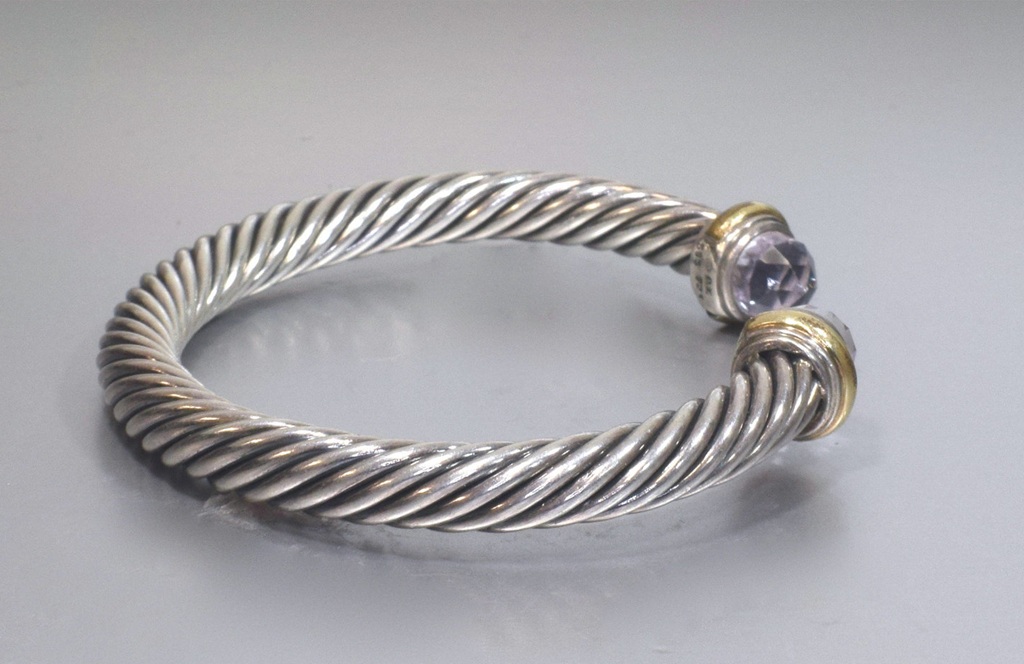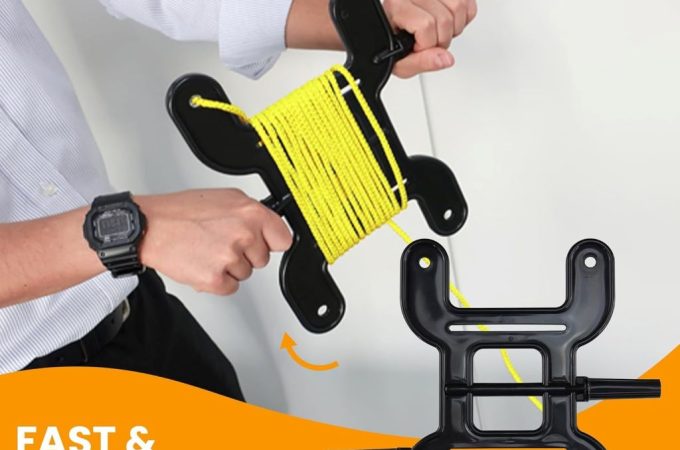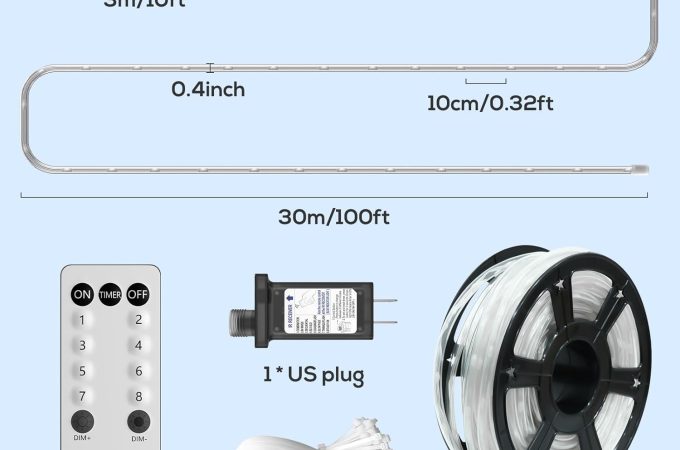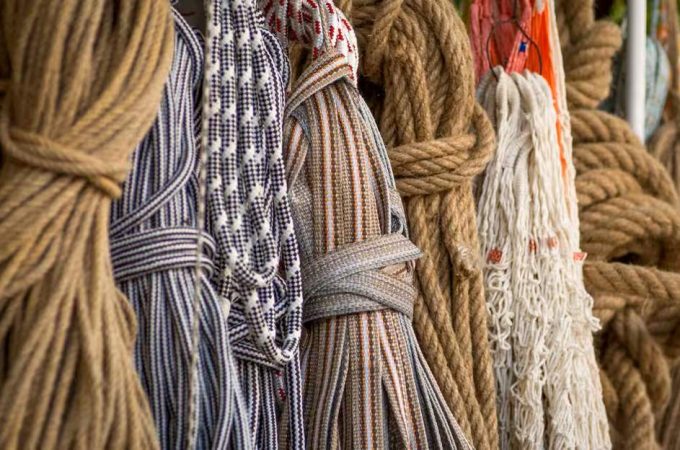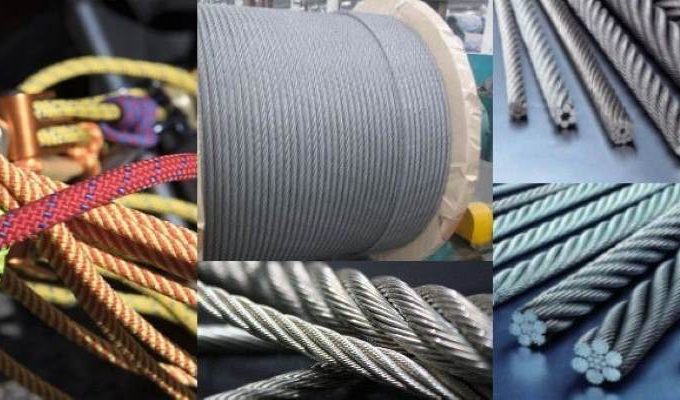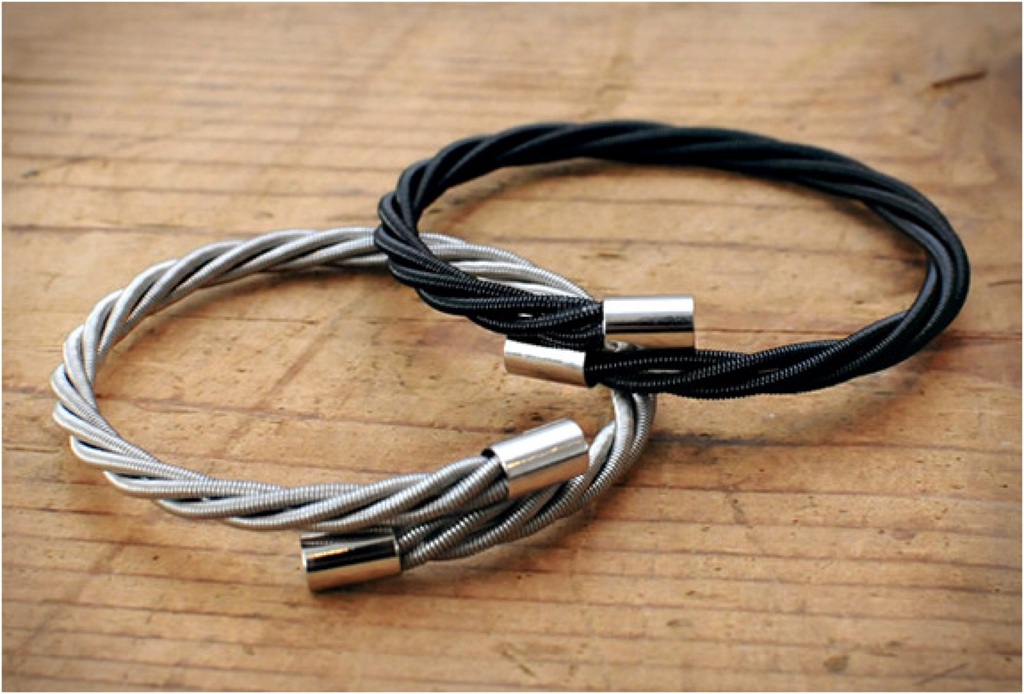
Wire Rope Bracelets: Industrial Strength Meets Modern Style
In the ever-evolving world of fashion accessories, certain trends emerge that perfectly capture a unique blend of aesthetics. The wire rope bracelet is one such phenomenon, seamlessly merging the rugged durability of industrial materials with the sleek sophistication of modern design. Once confined to maritime and heavy-duty applications, the humble wire rope has found a new, stylish life wrapped around the wrists of fashion-forward individuals.
Contents at a Glance
ToggleThis accessory isn’t just a fleeting trend; it’s a statement piece that speaks to strength, resilience, and a refined appreciation for unconventional beauty. Whether you’re drawn to minimalist design, industrial chic, or simply looking for a durable and distinctive piece of jewelry, the wire rope bracelet offers compelling appeal. Let’s delve into what makes these bracelets unique, how to style them, and why they continue to capture attention.
What Exactly is a Wire Rope Bracelet?
At its core, a wire rope bracelet is exactly what its name suggests: a bracelet crafted from wire rope, the same kind of material fundamentally used in heavy lifting, sailing, and architectural support. However, don’t picture a greasy, thick industrial cable. These bracelets utilize refined, thinner versions of stainless steel (and sometimes titanium) wire ropes. Typically, multiple fine strands of metal wire are twisted or braided together to form a single, flexible yet incredibly strong rope.
The construction mimics that of its industrial counterparts, lending it an inherent sense of strength and durability. The design often evokes nautical or mechanical themes, appealing to those who appreciate functional aesthetics. It’s this transformation of a utilitarian material into a wearable piece of art that forms the basis of its unique charm. They are distinct from traditional chain or link bracelets, offering a different texture and visual weight.
The Allure of Industrial Chic: Why We Love Them
The appeal of wire rope bracelets lies in their fascinating paradox: they are simultaneously rugged and refined. The tightly woven or twisted metal strands speak of strength and engineering, while the polished finish and often minimalist design lend an air of modern elegance. This “industrial chic” aesthetic resonates strongly with contemporary fashion sensibilities that value authenticity, texture, and unique material combinations.
Versatility is Key: One of the main draws is their incredible versatility. A simple stainless steel wire rope bracelet can complement a casual jeans-and-tee look just as easily as it can add an edge to smart-casual attire. Depending on the thickness, clasp design, and any added embellishments (like precious metal accents or diamonds), they can range from understatedly cool to strikingly bold.
Unisex Appeal: Unlike some jewelry styles that lean heavily masculine or feminine, wire rope bracelets possess a strong unisex quality. Their clean lines, robust materials, and functional aesthetic appeal broadly, making them a popular choice for anyone seeking a non-traditional accessory.
Texture and Tactility: In a world of smooth surfaces, the distinct texture of a wire rope bracelet offers tactile interest. The way the light catches the individual strands adds a subtle depth and visual complexity that sets it apart from simpler metal bands or cuffs.
Materials and Construction: A Closer Look
The quality and longevity of a wire rope bracelet depend heavily on the materials and craftsmanship involved. Understanding these elements helps in choosing the right piece.
Core Materials: Steel and Beyond
- Stainless Steel: This is the most common material, prized for its excellent balance of durability, corrosion resistance, and affordability. Grade 316L stainless steel is particularly popular – it’s a surgical grade known for being hypoallergenic, making it suitable for most people, even those with sensitive skin. It resists rust, tarnish, and scratches reasonably well, ensuring the bracelet maintains its look over time. Stainless steel offers a bright, silvery finish but can also be treated for different colours.
- Titanium: For those seeking an even lighter yet stronger option, titanium wire rope bracelets are available. Titanium is renowned for its high strength-to-weight ratio, exceptional corrosion resistance (even against saltwater), and hypoallergenic properties. It typically has a slightly darker, grayish hue compared to stainless steel.
- Coatings (PVD): To achieve different colours like black, gold, rose gold, or even blue, Physical Vapor Deposition (PVD) coatings are often applied to stainless steel. This process bonds a thin layer of material onto the steel, enhancing wear resistance and providing vibrant, durable colour options. While durable, PVD coatings can eventually wear off with heavy use or abrasion, especially on high-contact points.
The Clasp: Function Meets Form
The clasp is a critical component, ensuring the bracelet stays secure while also contributing to its overall aesthetic. Common types include:
- Screw Clasps: Often cylindrical, these involve one part screwing into the other. They offer good security but can sometimes be slightly fiddly to operate one-handed.
- Magnetic Clasps: Easy to use, these rely on strong magnets for closure. While convenient, ensure the magnets are powerful enough for security, especially on heavier bracelets. Some designs incorporate a locking mechanism for added safety. It’s crucial to rinse these clasps after saltwater exposure, as magnets (often neodymium coated in nickel) can corrode.
- Shackle Clasps: Evoking nautical hardware, these use a U-shaped shackle secured by a screw pin. They offer a distinct, robust look and are very secure but require unscrewing the pin to take on and off.
- Lobster Clasps: A common jewelry finding, these spring-loaded clasps are familiar and generally secure, often found on finer or lighter wire rope designs.
- Folding or Deployment Clasps: Similar to watch clasps, these fold over and snap shut, offering a secure and often streamlined look.
Wire Construction: Twist and Flexibility
The way the individual wires are combined affects the bracelet’s look and feel:
- Twisted Rope: Strands are twisted together in a helix pattern. This often results in a slightly stiffer rope with a classic, defined look.
- Braided Rope: Strands are interwoven, often resulting in a more flexible rope with a smoother surface texture.
The number of strands and the tightness of the weave or twist also influence flexibility and appearance.
Related: What is the Most Commonly Used Wire Rope?
Styling Your Wire Rope Bracelet: Making it Your Own
The versatility of wire rope bracelets means they can be styled in numerous ways:
Worn Solo
For a minimalist yet impactful statement, wear a single wire rope bracelet. Its unique texture and industrial vibe are often enough to draw the eye without needing other adornments. This works particularly well with medium to thicker gauge ropes or those with distinctive clasps.
Stacked and Layered
Wire rope bracelets play well with others. Create a personalized stack by combining them with:
- Leather Bracelets: The contrast between the cool metal and warm leather creates a balanced, rugged look.
- Beaded Bracelets: Add a pop of colour or natural texture with stone or wood beads.
- Other Metal Bracelets: Mix with thinner chains or solid cuffs, varying the textures and widths for visual interest. Ensure the metals complement each other (e.g., steel with silver tones, or intentionally mixing metals like steel and gold).
Paired with a Watch
A wire rope bracelet can be a great companion to a wristwatch. Consider these tips:
- Complementary Style: Match the bracelet’s vibe to your watch. An industrial-looking bracelet pairs well with dive or field watches, while a sleeker design complements dressier timepieces.
- Metal Harmony: Ideally, match the bracelet’s metal (or clasp) to the watch case or accents.
- Placement: Wear it on the opposite wrist for balance, or on the same wrist below the watch if the bracelet is relatively slim and comfortable enough not to interfere with the watch or scratch it.
Occasion Appropriateness
Wire rope bracelets excel in casual and smart-casual settings. They add character to everyday outfits. Depending on the design – particularly sleeker, thinner versions with refined clasps or precious metal details – they can sometimes be incorporated into more formal looks, offering an unexpected modern twist.
Related: How to Make a Bracelet with String DIY
Keeping Your Bracelet Looking Sharp: Care and Maintenance
Wire rope bracelets are generally durable, but a little care ensures they stay looking their best:
- Regular Cleaning: For general upkeep, wipe the bracelet with a soft, lint-free cloth. For more thorough cleaning, use lukewarm water and mild soap. Gently scrub with a soft brush (like an old toothbrush) if needed, paying attention to the clasp mechanism. Rinse thoroughly and pat dry completely with a soft cloth. Allow it to air dry fully, especially if it has a complex clasp.
- Avoid Harsh Chemicals: Remove your bracelet before swimming in chlorinated pools or using harsh cleaning chemicals, as these can damage the metal finish or coatings.
- Saltwater Caution: While high-grade stainless steel and titanium resist saltwater well, it’s always best practice to rinse your bracelet thoroughly with fresh water after exposure to the sea. This is particularly important for clasps containing magnets or non-stainless components, which can corrode.
- Check the Clasp: Periodically ensure the clasp is functioning correctly and securely. For screw clasps, check that they haven’t loosened.
- Storage: When not wearing it, store your bracelet in a separate pouch or compartment in your jewelry box to prevent it from getting scratched by other items (and vice-versa, as the steel can scratch softer metals).
Finding Your Perfect Fit: Choosing the Right Bracelet
Selecting the ideal wire rope bracelet involves considering several factors:
- Wrist Size: Proper fit is crucial for comfort and aesthetics. Measure your wrist using a flexible tape measure or a piece of string/paper wrapped snugly around your wrist, then marked and measured against a ruler. Add about half an inch (1-1.5 cm) for a comfortable fit, or slightly more or less depending on your preference for a snug or looser feel. Check the manufacturer’s sizing guide, as internal circumference is key.
- Material Preference: Consider potential allergies (opt for 316L stainless steel or titanium if sensitive), the desired weight (titanium is lighter), and the overall look (bright steel vs. darker titanium vs. coated options).
- Clasp Type: Think about ease of use versus security. Do you prefer something quick like a magnet, or the robust feel of a screw or shackle clasp?
- Design and Thickness: Choose a thickness and style that reflects your personal taste. Do you want a bold, attention-grabbing piece or a more subtle, understated accessory? Consider the scale relative to your wrist size.
- Quality and Brand: Invest in a well-made bracelet from a reputable source. Good craftsmanship ensures the rope is tightly woven, the finish is smooth, and the clasp is reliable, leading to greater longevity and enjoyment.
Related: Your Ultimate Guide to Crafting a 550 Paracord Bracelet Without Hardware
People Also Ask (FAQs)
Here are answers to some common questions about wire rope bracelets:
Are wire rope bracelets durable?
Yes, durability is one of their key strengths. Made primarily from stainless steel or titanium wires woven together, they are inherently strong and resistant to breakage, wear, and tear under normal use. High-quality materials like 316L stainless steel also resist corrosion and tarnishing.
Can you wear a wire rope bracelet in water?
Generally, yes. Bracelets made from 316L stainless steel or titanium are highly water-resistant and won’t typically rust or tarnish from exposure to fresh water. However, it’s advisable to rinse the bracelet with fresh water after swimming in saltwater or chlorinated pools, especially focusing on the clasp mechanism, as some components (like magnets) might be less resistant. Always dry it thoroughly afterward.
Are wire rope bracelets comfortable?
Most people find them comfortable, especially designs using braided wire which tends to be more flexible. Comfort also depends heavily on choosing the correct size – a bracelet that is too tight or too loose will be less comfortable. The weight is usually manageable, with titanium being noticeably lighter than steel.
How do I measure my wrist for a wire rope bracelet?
Use a flexible measuring tape, string, or strip of paper. Wrap it around your wrist where you intend to wear the bracelet – it should be snug but not tight. Mark the point where it overlaps and measure this length against a ruler. Add approximately 0.5 to 0.75 inches (1.2 to 2 cm) to this measurement for a comfortable fit. Always check the specific sizing recommendations of the manufacturer if available.
Are wire rope bracelets hypoallergenic?
Wire rope bracelets made from high-quality materials like 316L surgical-grade stainless steel or titanium are generally considered hypoallergenic and are suitable for most people with sensitive skin or metal allergies. Avoid bracelets made from lower-grade steels or unknown alloys if you have sensitivities.
What materials are typically used in wire rope bracelets?
The primary material for the rope itself is usually stainless steel (often 316L grade) or occasionally titanium. Clasps can be made from the same material or other metals. Some designs may incorporate accents like leather, rubber, carbon fiber, precious metals (gold, silver), or even diamonds.
Conclusion: A Fusion of Strength and Style
Wire rope bracelets stand out as a compelling accessory choice, offering a unique narrative that intertwines industrial origins with contemporary fashion. Their inherent durability, derived from materials designed for demanding tasks, translates into a long-lasting piece of jewelry that can withstand daily wear. Beyond strength, their distinctive texture and versatile aesthetic – ranging from minimalist and rugged to sleek and sophisticated – allow for effortless integration into various personal styles. Whether worn as a solo statement, stacked for effect, or paired with a watch, a wire rope bracelet adds character and a touch of unconventional elegance. It’s more than just jewelry; it’s a wearable symbol of resilience and refined taste, making it a timeless addition to any modern accessory collection.

